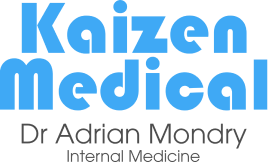Blood pressure readings above 180/120 mmHg signal a hypertensive crisis requiring immediate medical attention. This dangerous elevation can damage blood vessels within hours, leading to stroke, heart attack, kidney failure, or aortic dissection. Recognizing the difference between urgency and emergency determines whether you need immediate emergency care or same-day specialist consultation.
Hypertensive crises divide into two categories: hypertensive urgency (severely elevated blood pressure without organ damage) and hypertensive emergency (elevated pressure actively damaging organs). The distinction guides treatment decisions—urgency allows controlled reduction over 24-48 hours, while emergency requires immediate intravenous medications to prevent permanent organ damage or death.
Understanding Hypertensive Crisis Classifications
Hypertensive Urgency
Blood pressure exceeding 180/120 mmHg without evidence of acute organ damage characterizes hypertensive urgency. Patients may experience severe headaches, shortness of breath, or anxiety, but diagnostic tests show no active organ injury. This condition typically develops from medication non-compliance, drug interactions, or acute stress.
Treatment involves oral medications to reduce blood pressure gradually over 24-48 hours. Rapid reduction risks cerebral hypoperfusion—the brain adapts to chronic hypertension, and sudden pressure drops can cause stroke. Target reduction aims for 25% decrease within the first 24 hours, reaching normal levels over several days.
Common medications include:
- Clonidine 0.1-0.2 mg orally, repeated hourly as needed
- Labetalol 200-400 mg orally every 2-3 hours
- Captopril 25-50 mg orally, repeated after 1-2 hours if needed
- Amlodipine 5-10 mg orally for sustained control
Hypertensive Emergency
Active organ damage distinguishes hypertensive emergency from urgency. Target organs include the brain, heart, kidneys, and eyes. Symptoms reflect the affected system—chest pain indicates cardiac involvement, visual changes suggest retinal damage, and altered mental status points to encephalopathy.
Immediate hospitalization with intravenous medication prevents irreversible damage. Treatment goals vary by presentation:
- Aortic dissection: Reduce systolic pressure to 100-120 mmHg within 20 minutes
- Acute coronary syndrome: Lower mean arterial pressure by 20-30% initially
- Ischemic stroke: Maintain pressure unless exceeding 220/120 mmHg
- Hemorrhagic stroke: Target systolic pressure below 140 mmHg
Recognizing Warning Signs and Symptoms
Neurological Manifestations
Hypertensive encephalopathy presents with:
- Severe headache, typically occipital
- Confusion or altered consciousness
- Visual disturbances including blurred vision or temporary blindness
- Seizures in severe cases
- Nausea and vomiting from increased intracranial pressure
CT or MRI imaging may reveal posterior reversible encephalopathy syndrome (PRES), characterized by white matter edema predominantly in posterior brain regions. Early recognition and treatment typically lead to complete reversal of symptoms.
Cardiovascular Presentations
Cardiac manifestations include:
- Crushing chest pain from acute coronary syndrome
- Severe shortness of breath from acute pulmonary edema
- Tearing chest or back pain suggesting aortic dissection
- Palpitations from arrhythmias induced by left ventricular strain
ECG changes may show left ventricular hypertrophy, ischemia, or strain patterns. Troponin elevation indicates myocardial injury, while chest X-ray reveals pulmonary congestion or widened mediastinum in dissection.
Renal Involvement
Acute kidney injury manifests through:
- Decreased urine output
- Fluid retention causing peripheral edema
- Uremia symptoms including metallic taste and pruritus
- Laboratory findings showing elevated creatinine and blood urea nitrogen
Urinalysis typically reveals proteinuria and hematuria. Microscopic examination may show red blood cell casts, indicating glomerular damage from severe hypertension.
Emergency Management Protocols
Initial Assessment
Emergency evaluation includes:
- Accurate blood pressure measurement in both arms
- Complete neurological examination
- Fundoscopic examination for papilledema or hemorrhages
- Cardiovascular assessment including auscultation for new murmurs
- Laboratory tests: complete blood count, metabolic panel, urinalysis, troponin, ECG
Point-of-care ultrasound assists in rapid assessment of cardiac function and volume status. Chest radiography identifies pulmonary edema or aortic abnormalities requiring immediate intervention.
Intravenous Medications
First-line agents depend on the clinical presentation:
Nicardipine: Calcium channel blocker with predictable dose-response
- Initial infusion: 5 mg/hour
- Increase by 2.5 mg/hour every 5-15 minutes
- Maximum rate: 15 mg/hour
- Onset within 5-10 minutes
Labetalol: Combined alpha and beta-blocker
- Initial bolus: 20 mg IV over 2 minutes
- Double dose every 10 minutes (40 mg, then 80 mg)
- Maximum single dose: 80 mg
- Continuous infusion: 1-2 mg/minute
Sodium nitroprusside: Potent arterial and venous dilator
- Starting dose: 0.25-0.5 mcg/kg/minute
- Titrate every 2-3 minutes to effect
- Risk of cyanide toxicity with prolonged use
- Requires arterial line monitoring
Monitoring Requirements
Continuous monitoring during treatment includes:
- Arterial line for accurate blood pressure measurement
- Telemetry for cardiac rhythm monitoring
- Hourly neurological assessments
- Urine output measurement
- Serial laboratory tests every 6-12 hours
Target blood pressure reduction follows specific timelines based on presentation. Most conditions require 10-20% reduction within the first hour, followed by gradual normalization over 24-48 hours.
Post-Crisis Management
Transition to Oral Therapy
Converting from intravenous to oral medications requires careful planning:
- Overlap medications to prevent rebound hypertension
- Start long-acting agents 30-60 minutes before discontinuing IV therapy
- Choose medications based on comorbidities and contraindications
- Monitor blood pressure every 4-6 hours during transition
Combination therapy often provides better control than single-agent treatment. Common regimens include ACE inhibitors or ARBs with calcium channel blockers or diuretics.
Identifying Precipitating Factors
Investigation of crisis triggers prevents recurrence:
- Medication review for compliance and interactions
- Screen for secondary hypertension causes
- Evaluate for obstructive sleep apnea
- Assess dietary sodium intake and lifestyle factors
- Check for illicit drug use, particularly cocaine or amphetamines
💡 Did You Know?
Tyramine-containing foods interact with monoamine oxidase inhibitors to cause severe hypertensive crises. Aged cheeses, cured meats, and fermented products pose particular risk for patients taking these antidepressants.
Long-term Risk Reduction
Preventing future crises requires:
- Home blood pressure monitoring with log maintenance
- Medication adherence strategies including pill organizers or smartphone reminders
- Regular follow-up appointments every 1-3 months initially
- Lifestyle modifications addressing weight, sodium intake, and alcohol consumption
- Stress management techniques
What Our Internal Medicine and Hypertension Specialist Says
Managing hypertensive crises extends beyond acute treatment. Many patients experience crises due to unrecognized resistant hypertension or medication non-adherence. Our approach involves comprehensive evaluation for secondary causes, optimization of medication regimens, and patient education about warning signs.
We frequently discover patients taking medications incorrectly or experiencing side effects leading to non-compliance. Addressing these issues through alternative formulations, dosing schedule adjustments, or combination pills improves long-term control. Regular monitoring identifies blood pressure trends before they reach crisis levels.
Putting This Into Practice
- Purchase a validated home blood pressure monitor and check readings twice daily during medication adjustments
- Create a medication chart listing drug names, doses, and timing to prevent missed doses
- Maintain a symptom diary noting headaches, vision changes, or chest discomfort with corresponding blood pressure readings
- Establish an action plan with specific blood pressure thresholds triggering medical contact
- Keep an updated medication list accessible for emergency providers
When to Seek Professional Help
- Blood pressure readings consistently above 180/120 mmHg
- Chest pain, pressure, or tightness with elevated blood pressure
- Sudden severe headache unlike previous headaches
- Vision changes including blurriness, double vision, or visual loss
- Difficulty speaking, facial drooping, or arm weakness
- Shortness of breath at rest or with minimal activity
- Confusion, difficulty concentrating, or personality changes
- Severe back or abdominal pain
- Blood in urine or significant decrease in urination
- Persistent nosebleeds with elevated blood pressure
Commonly Asked Questions
How quickly should blood pressure drop during treatment?
Safe reduction targets 10-20% within the first hour for most hypertensive emergencies. Aggressive lowering risks stroke from cerebral hypoperfusion. Aortic dissection represents the exception, requiring rapid reduction to systolic pressure 100-120 mmHg within 20 minutes.
Can I treat hypertensive crisis at home with extra medication?
Taking additional doses of prescribed medications without medical guidance risks dangerous blood pressure drops. Home treatment applies only to asymptomatic elevations below 180/120 mmHg. Higher readings or any symptoms require immediate medical evaluation.
What triggers sudden blood pressure spikes?
Common triggers include medication non-compliance, drug interactions, acute pain, severe anxiety, stimulant use, and dietary indiscretions. Medical conditions like kidney disease, thyroid disorders, and sleep apnea contribute to sudden elevations.
How long does recovery from hypertensive emergency take?
Organ recovery varies by system affected. Hypertensive encephalopathy typically resolves within 24-48 hours of treatment. Cardiac injury may require weeks for full recovery. Kidney function often improves gradually over several weeks if intervention occurs promptly.
Will I need lifelong medication after a hypertensive crisis?
Most patients require long-term antihypertensive therapy following a crisis. Medication adjustments occur frequently during the first several months to achieve optimal control. Some patients successfully reduce medications through significant lifestyle changes, but discontinuation rarely proves safe.
Next Steps
Hypertensive crisis represents a medical emergency requiring immediate intervention to prevent permanent organ damage. Recognizing warning signs—particularly blood pressure exceeding 180/120 mmHg with symptoms—enables timely treatment. Following crisis resolution, comprehensive evaluation identifies underlying causes while optimized medication regimens prevent recurrence.
If you’re experiencing severe blood pressure elevations or symptoms suggesting hypertensive emergency, our MOH-accredited internal medicine and hypertension specialist provides immediate evaluation and comprehensive management strategies.






